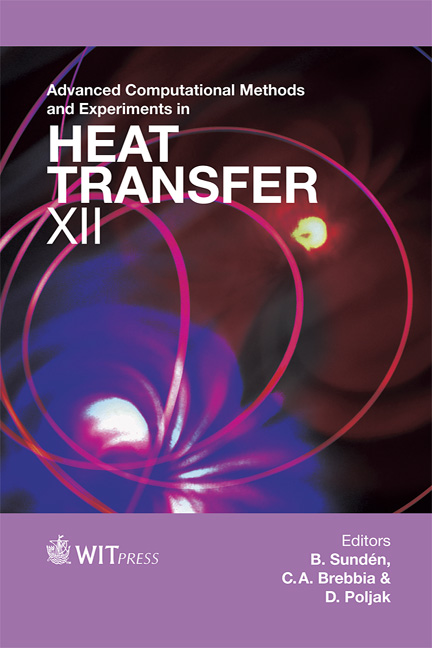Application Of 3D Heat Diffusion To Detect Embedded Empty Cracks
Price
Free (open access)
Transaction
Volume
75
Pages
12
Page Range
133 - 144
Published
2012
Size
542 kb
Paper DOI
10.2495/HT120121
Copyright
WIT Press
Author(s)
C. Serra, A. Tadeu, J. Prata & N. Simões
Abstract
This paper presents a three-dimensional boundary element model (BEM), formulated in the frequency domain, to simulate the heat diffusion by conduction that occurs in the vicinity of a three-dimensional crack. The crack is assumed to have null thickness and does not allow diffusion of energy, so the heat fluxes are null along its boundary. The crack is assumed to be embedded in an unbounded medium. The boundary element formulation is written in terms of normalderivative integral equations (known as TBEM) in order to handle null thickness cracks. The resulting hypersingular integrals are solved analytically. After verifying the TBEM results by means of known analytical solutions for cylindrical inclusions, the applicability of the proposed methodology is shown by simulating the heat diffusion generated by a point heat source placed in the vicinity of a crack. The size of the crack, its orientation and the position of the source are some of the variables that are analyzed to define features that may be used in non-destructive testing by infrared thermography. Keywords: transient heat conduction, 3D sources, infrared thermography. 1 Introduction Heat and moisture diffusion is sensitive to the presence of defects, hence thermal pattern images of building elements collected via Infrared Thermography (IRT) have proven to be useful in detecting heat losses, missing or damaged insulation, thermal bridges, air leakages and excess moisture [1, 2] and for testing the integrity of composites [3, 4]. IRT is mostly used as a qualitative nondestructive testing technique, however solving inverse heat conduction problems
Keywords
transient heat conduction, 3D sources, infrared thermography.





